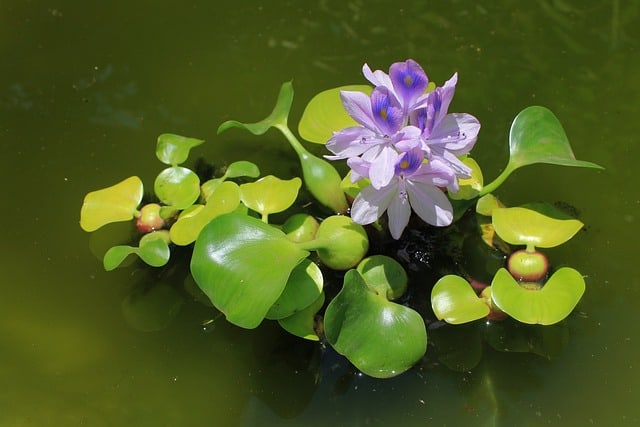Hyacinths are beautiful and fragrant plants that can add color and life to any garden or indoor space. However, one common problem that many gardeners face is hyacinth turning brown. This can be a frustrating and disappointing experience, especially if you have put a lot of time and effort into caring for your plants.
Understanding the causes of hyacinth plants turning brown is important in order to prevent future occurrences and help your plants recover. Common causes of browning hyacinth plants include improper watering, exposure to too much or too little sunlight, and pests or diseases.
Additionally, it is important to understand the lifecycle of hyacinths and their ideal growing conditions in order to provide the best care for your plants.
Key Takeaways
- Hyacinths are beautiful and fragrant plants that can add color and life to any garden or indoor space.
- Common causes of browning hyacinth plants include improper watering, exposure to too much or too little sunlight, and pests or diseases.
- Understanding the lifecycle of hyacinths and their ideal growing conditions is important in order to provide the best care for your plants and prevent future occurrences of browning.
Other top posts in this category:
Understanding Hyacinth

Hyacinth (Hyacinthus orientalis) is a popular spring-blooming bulbous plant that belongs to the Asparagaceae family. It is native to the eastern Mediterranean region and is widely cultivated for its fragrant and colorful flowers. Hyacinth bulbs are typically planted in the fall and produce beautiful blooms in the spring.
Hyacinth plants are known for their showy and fragrant flowers that come in a variety of colors, including pink, purple, blue, white, and yellow. They are easy to grow and care for, making them a popular choice for gardeners of all skill levels.
There are many cultivars of hyacinth available, each with its own unique characteristics. Some popular cultivars include ‘Jan Bos,’ which has deep red flowers, and ‘Blue Jacket,’ which has striking blue blooms. Hyacinths are also available in double-flowered varieties, which have extra petals and a fuller appearance.
Hyacinths are considered perennials, meaning they can live for several years with proper care. They prefer well-draining soil and full sun to partial shade. Hyacinth bulbs should be planted in the fall, about 6-8 inches deep and 4-6 inches apart.
Hyacinth Lifecycle
Hyacinths are a popular spring-blooming bulb that produces fragrant and colorful flowers. Understanding the lifecycle of hyacinths is essential to ensure that they thrive and continue to produce beautiful blooms year after year.
Normal Lifecycle
Hyacinths follow a predictable lifecycle that includes a period of growth, flowering, and dormancy. In the spring, hyacinth bulbs begin to sprout and grow leaves and flower stalks. The flowers bloom for several weeks, producing a delightful fragrance that fills the air. After the flowers fade and die, the plant enters a period of dormancy.
During dormancy, the leaves and flower stalks die back, and the plant conserves its energy for the next growing season. The bulb remains dormant throughout the summer and fall, waiting for the right environmental conditions to begin growing again in the spring.
Dormancy
It is normal for hyacinth plants to turn brown and die back during dormancy. This is a natural part of the plant’s lifecycle, and it is nothing to be concerned about. In fact, it is essential to allow the plant to complete its natural lifecycle so that it can store up energy for the next growing season.
Gardeners should avoid watering or fertilizing hyacinth bulbs during dormancy. Instead, they should allow the plant to rest and conserve its energy until the next growing season.
Ideal Conditions for Hyacinth
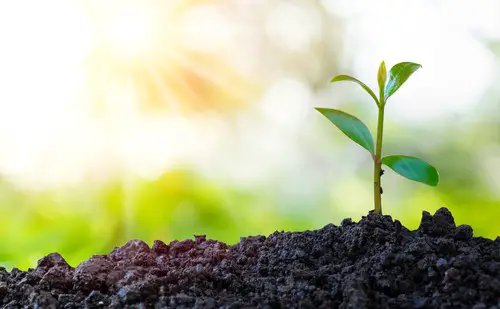
Hyacinths are beautiful and fragrant flowers that can be grown indoors or outdoors. To ensure that your hyacinths grow healthy and vibrant, it’s important to provide them with the ideal growing conditions. Here are some of the key factors to consider:
1. Light
Hyacinths need plenty of light to grow, but they shouldn’t be exposed to direct sunlight. Too much light can cause brown leaves on hyacinth, as well as not enough. Indirect sunlight is ideal for indoor hyacinths, while outdoor hyacinths can tolerate full sun or partial sun exposure.
2. Water
Hyacinths require regular watering, but they don’t like to sit in water. Good drainage is essential to prevent root rot, which is a major problem with indoor hyacinths. When watering your hyacinths, make sure the soil is moist but not waterlogged.
3. Soil
Hyacinths prefer well-draining soil that is rich in organic matter. You can use a commercial potting mix or make your own by mixing equal parts of peat moss, vermiculite, and perlite. Avoid using heavy soils that retain moisture, as they can lead to root rot.
4. Temperature
Hyacinths prefer cool temperatures between 60 and 65 degrees Fahrenheit. They can tolerate slightly warmer temperatures, but they may not flower as well. If you’re growing hyacinths indoors, make sure the room is well-ventilated to prevent overheating.
5. Fertilizer
Hyacinths don’t require a lot of fertilizer, but they can benefit from a balanced fertilizer once or twice a year. You can use a slow-release fertilizer or a liquid fertilizer diluted to half-strength. Avoid applying fertilizer when the hyacinths are in bloom, as it can damage the flowers.
By providing your hyacinths with the right growing conditions, you can enjoy beautiful and healthy flowers year after year.
Hyacinth Planting and Care
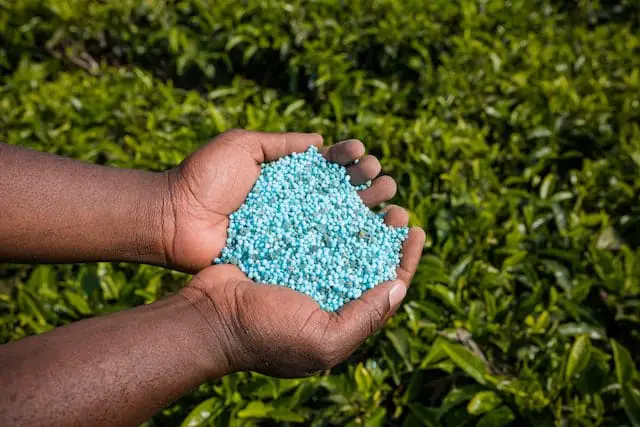
Hyacinths are a beautiful addition to any garden, and with proper care, they can thrive for years. Here are some tips for planting and caring for hyacinths:
1. Planting
Hyacinths should be planted in the fall, about 6-8 inches deep and 6 inches apart. They prefer well-draining soil and a location that receives full sun to partial shade. When planting, it’s important to make sure the pointed end of the bulb is facing up.
2. Watering
Hyacinths require regular watering, especially during their growing season in the spring. However, it’s important not to overwater them, as this can lead to root rot. A good rule of thumb is to water deeply once a week and allow the soil to dry out slightly between waterings.
3. Fertilizing
Hyacinths benefit from a balanced fertilizer applied in the spring when they start to emerge from the ground. It’s important to avoid getting fertilizer on the leaves or flowers, as this can burn them. Additionally, a bulb fertilizer can be applied in the fall when planting to help provide nutrients for the following spring.
4. Repotting
Hyacinths do not need to be repotted and can remain in the same location for several years. If they become overcrowded, however, they may need to be divided and replanted.
5. Pruning and Deadheading
Once the flowers have faded, it’s important to deadhead them to prevent the plant from expending energy on seed production. Additionally, the leaves should not be pruned until they have turned yellow and died back naturally, as this helps the plant store energy for the following year.
6. Mulch and Compost
A layer of mulch can help retain moisture and regulate soil temperature around the hyacinth bulbs. Compost can also be added to the soil in the fall when planting to help provide nutrients.
7. Air Circulation
Hyacinths require good air circulation to prevent fungal diseases. It’s important to space them out properly and avoid planting them in areas with poor air flow.
8. Proper Care
Proper care of hyacinths includes regular watering, fertilizing, deadheading, and allowing the leaves to die back naturally. Additionally, it’s important to monitor for pests and diseases and address any issues promptly.
9. Gardening Tips
When planting hyacinths, it’s important to consider the color and height of the flowers to ensure they complement other plants in the garden. Additionally, hyacinths can be forced indoors for early blooms in the winter. To do this, the bulbs should be chilled for several weeks in the fall before planting in pots and bringing indoors.
Hyacinth Turning Brown – 4 Common Problems

Hyacinths are beautiful flowers that can add color and fragrance to any garden or indoor space. However, if you notice your hyacinth turning brown, it can be a sign that something is not right. Here are some common causes of brown spots and brown leaves on hyacinth plants:
1. Overwatering
One of the most common causes of hyacinth turning brown is overwatering. When the soil is too wet, it can lead to root rot, which can cause the leaves and flowers to turn brown.
It is important to make sure that the soil is moist but not waterlogged. You can check the soil moisture level by sticking your finger into the soil. If it feels wet, then you should wait before watering again.
2. Underwatering
On the other hand, underwatering can also cause hyacinth flowers to turn brown. When the soil is too dry, the plant will start to wilt and the leaves will turn brown. It is important to make sure that the soil is consistently moist, especially during the growing season.
3. Cold Temperatures and Frost Damage
Cold temperatures and frost can also cause hyacinth flowers to turn brown. If the temperature drops below freezing, it can damage the plant’s cells and cause the leaves and flowers to turn brown. It is important to protect your hyacinth plants from frost by covering them with a blanket or tarp.
4. Stress
Stress can also cause hyacinth flowers to turn brown. If the plant is under stress, it may not be able to absorb nutrients properly, which can cause the leaves and flowers to turn brown. Common sources of stress include transplant shock, pests, and diseases.
Hyacinth Diseases and Pests
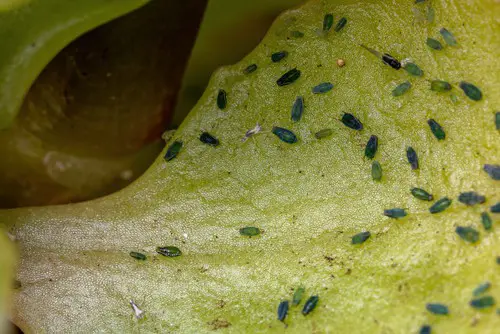
Hyacinths are generally hardy plants, but they can be susceptible to a variety of diseases and pests. Here are some of the most common problems that can cause hyacinth plants to turn brown:
1. Fungal Infections
Fungal infections are one of the most common problems that affect hyacinth plants. The most common fungal infection is botrytis fungus, which can cause brown spots on the leaves and flowers. This fungus thrives in cool, damp conditions, so it is important to avoid overwatering and to ensure proper air circulation around the plant.
2. Root and Bulb Rot
Root and bulb rot can be caused by a variety of factors, including overwatering, poor drainage, and soil-borne pathogens. When the roots or bulbs become infected, the plant will start to turn brown and wilt. To prevent root and bulb rot, it is important to plant hyacinths in well-draining soil and to avoid overwatering.
3. Fungal Diseases
In addition to botrytis fungus, hyacinths can be susceptible to other fungal diseases, such as gray mold and powdery mildew. These diseases can cause brown spots on the leaves and flowers, as well as stunted growth and wilting. To prevent fungal diseases, it is important to avoid overwatering and to promote good air circulation around the plant.
4. Insects
Sap-sucking insects, such as thrips, can also cause hyacinth plants to turn brown. These insects feed on the sap of the plant, which can cause the leaves and flowers to discolor and wilt. To prevent insect infestations, it is important to keep the plant healthy and to remove any infested leaves or flowers as soon as possible.
Hyacinth Recovery and Prevention
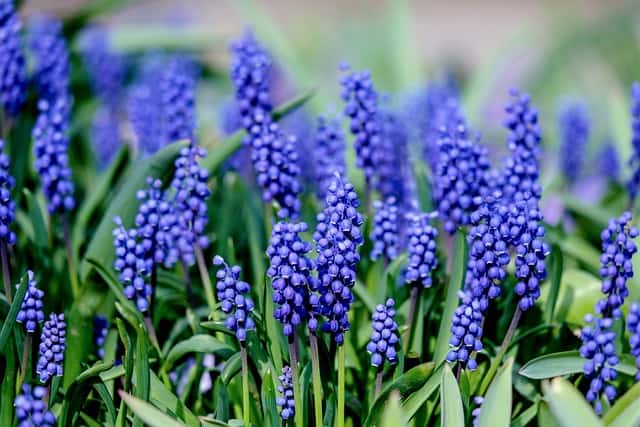
When hyacinth plants start turning brown, it can be a cause for concern. However, in many cases, it’s just a natural part of the plant’s lifecycle. The brown color can be a signal that the plant is getting ready to shed its flowers or go into dormancy. If the plant is not showing any other signs of distress, there’s no need to panic.
To help prevent hyacinth plants from turning brown prematurely, it’s important to provide proper care. This includes ensuring that the plant is getting enough water, but not too much.
Overwatering can lead to root rot, which can cause yellowing and browning of the leaves. It’s also important to ensure that the plant has good drainage. Hyacinths should be planted in soil that is well-draining and has plenty of organic matter.
One way to help prevent hyacinths from turning brown is to apply neem oil. This natural oil is derived from the neem tree and has insecticidal and fungicidal properties. It can help prevent pests and diseases from attacking the plant, which can lead to browning and other issues.
If a hyacinth plant does start to turn brown, there are a few steps that can be taken to help it recover. First, it’s important to unpot the plant and check the roots. If the roots are mushy or discolored, it may be necessary to trim them back and repot the plant in fresh soil. It’s also important to ensure that the plant is not being overwatered.
Hyacinths can also be stored for future use. Once the plant has finished blooming, the bulb can be dug up and stored in a cool, dark place until it’s time to replant in the fall. This can help prevent the plant from becoming stressed and turning brown prematurely.
Propagating Hyacinth
Hyacinth bulbs can be propagated through division or seed propagation. Dividing bulbs is the most common method, but if you want to try something different, you can try propagating hyacinths from seed.
1. Seed Propagation
Hyacinth seeds are small and black, and they develop in the place of the flowers once they fade. Collect the seeds once the pods turn brown and the seeds are fully matured.
Plant the seeds in a well-draining soil mix and cover them with a thin layer of sand. Keep the soil moist but not waterlogged, and place the container in a bright area with indirect sunlight.
The seeds will germinate in two to three weeks, and the seedlings will grow slowly for the first year. Once the seedlings reach a height of 4 to 6 inches, transplant them into individual pots or into the garden.
It takes three to four years for hyacinth seedlings to reach maturity and produce flowers. Seed propagation is a slower process compared to division, but it can be rewarding to watch the seedlings grow and develop into mature plants.
2. Division
Dividing hyacinth bulbs is a straightforward process. Dig up the bulbs after the foliage has yellowed and withered away. Brush off the soil and separate the smaller bulblets from the mother bulb.
Plant the bulblets in a well-draining soil mix, with the top of the bulb just below the soil surface. Water the bulbs well and place them in a bright area with indirect sunlight.
It takes two to three years for the bulblets to reach maturity and produce flowers. Once the bulbs have matured, they can be lifted and divided again to propagate more hyacinths.
Propagation is a great way to increase your collection of hyacinths or share them with friends and family. With a little patience and care, you can successfully propagate hyacinth bulbs or seeds and enjoy their fragrant blooms for years to come.
3. Bulb Propagation

Narcissus bulbs can also be propagated through division. After the foliage has died back, dig up the bulbs and separate the smaller bulblets from the mother bulb. Plant the bulblets in a well-draining soil mix, with the top of the bulb just below the soil surface.
Water the bulbs well and place them in a bright area with indirect sunlight. It takes two to three years for the bulblets to reach maturity and produce flowers. Once the bulbs have matured, they can be lifted and divided again to propagate more narcissus.
Hyacinth Varieties
Hyacinths are a popular choice for gardeners because of their fragrant, colorful flowers that bloom in the spring. There are several different varieties of hyacinths, each with its unique characteristics.
1. Colors
Hyacinths come in a variety of colors, including pink, blue, white, yellow, and purple. The Blue Jacket and Delft Blue varieties are popular blue hyacinth options, while the Pink Pearl and Jan Bos varieties offer beautiful pink blooms.
2. Fragrant Varieties
One of the most appealing features of hyacinths is their sweet fragrance. Some of the most fragrant hyacinth varieties include the Carnegie, which has a strong white bloom, and the City of Haarlem, which has a light pink color.
3. Flower Shape
Hyacinth flowers are typically bell-shaped, but there are a few varieties that have a slightly different shape. The Gipsy Queen, for example, has a more open, star-shaped bloom, while the Blue Star has a more compact, rounded flower.
4. Planting Varieties
Hyacinths can be planted in a variety of ways, including in pots, borders, and rock gardens. The Woodstock variety is a good choice for planting in pots, while the Fondant variety is ideal for planting in borders.
Outdoor Hyacinths
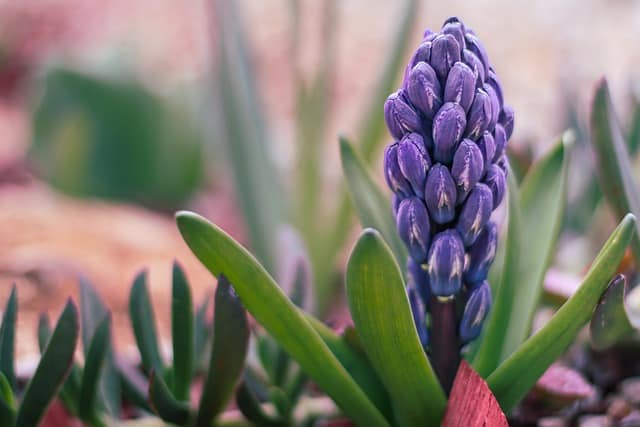
Outdoor hyacinths are a popular choice for gardeners looking to add some color and fragrance to their outdoor space. These bulbs are easy to grow and care for, making them a great choice for beginners. However, sometimes outdoor hyacinths can turn brown, which can be a cause for concern.
One reason that outdoor hyacinths may turn brown is due to a lack of water. These plants require a moist but not wet medium to grow properly. If the soil is too dry, the bulbs may start to turn brown and die. To prevent this, make sure to water your outdoor hyacinths regularly, especially during dry periods.
Another reason that outdoor hyacinths may turn brown is due to the type of medium they are planted in. These plants prefer a well-draining medium, such as sandy soil or a mix of sand and peat moss.
If the soil is too heavy or clay-like, it may retain too much moisture, leading to root rot and brown leaves. To prevent this, make sure to plant your outdoor hyacinths in a dry, well-draining medium.
Containers are another popular option for growing outdoor hyacinths. However, it’s important to choose the right container and medium. The container should have drainage holes to allow excess water to escape, and the medium should be well-draining to prevent water from accumulating in the bottom of the container.
Additionally, outdoor hyacinths planted in containers may require more frequent watering than those planted in the ground, as the soil can dry out more quickly.
Frequently Asked Questions
How do you prevent hyacinth leaves from turning yellow and brown?
One of the main reasons for yellowing and browning of hyacinth leaves is overwatering. To prevent this, make sure that the soil is well-draining and not waterlogged. Additionally, ensure that the plant is not exposed to direct sunlight for prolonged periods.
What causes hyacinth bulbs to rot?
Hyacinth bulbs can rot due to poor soil drainage, overwatering, or fungal infections. To prevent rot, make sure that the soil is well-draining and the plant is not overwatered. If you notice any signs of rot, such as soft or mushy bulbs, remove them immediately to prevent the spread of infection.
Why are hyacinth leaves turning yellow?
Hyacinth leaves can turn yellow due to overwatering, underwatering, or nutrient deficiencies. To prevent yellowing, make sure that the plant is watered appropriately and receives enough nutrients. Additionally, ensure that the plant is not exposed to direct sunlight for prolonged periods.
How can you revive dried up hyacinth flowers?
If your hyacinth flowers have dried up, you can revive them by cutting off the dead flowers and providing adequate water and sunlight. Additionally, you can fertilize the plant with a balanced fertilizer to promote new growth.
What is causing my hyacinth flowers to die?
Hyacinth flowers can die due to a lack of water, exposure to extreme temperatures, or fungal infections. To prevent this, make sure that the plant is watered appropriately and not exposed to extreme temperatures.
Additionally, ensure that the soil is well-draining and the plant is not overcrowded.
What are common indoor problems with hyacinths?
Common indoor problems with hyacinths include overwatering, underwatering, fungal infections, and pest infestations. To prevent these problems, make sure that the plant is watered appropriately, receives enough sunlight, and is not overcrowded.
Additionally, you can use organic pest control methods to prevent pest infestations.

Hey, I’m Lisa and I’ve been an avid gardener for over 30 years. I love writing, talking and living in the garden! Feel free to connect with me on my socials below

